2022.07.04.72
Files > Volume 7 > Vol 7 No 4 2022

1Iraq Natural History Research Center &Museum \ University Of Baghdad
Corresponding author: [email protected] *
Available from: http://dx.doi.org/10.21931/RB/2022.07.04.72
ABSTRACT
Samples (4th) reviewed are deposited and stored in the Iraqi Natural History Museum (INHM), and there are 4th of them. Sciurus anomalous (Güldenstädt, 1785) species are preserved and mummified. It is a Caucasian squirrel (S. anomalus) that was medium in size, with a grayish-to-chestnut color, a golden gray back, and a golden tail. It is found in the forests of East and Southeast Asia.
The variety possessed for the study was previously registered in the vertebrate literature by several authors and was stored by scientific methods in the museum. As a result of the multiplication and growth of these species, and to know the environmental changes that occurred in them, they were compared with models and samples found throughout Iraq.
Keywords. Caucasian Squirrel, Morphology, Sciurus anomalous, Voucher Specimens, Iraq.
INTRODUCTION
The numerous correspondence in terms of shape and size for rodents and the diversity of species being the most significant order in mammals made it challenging to identify them, as it contained about 2277 species1. Some rodents are of identical types in terms of form and may be genetically compatible and are called sister species, and it was necessary to describe new species regularly. However, taxonomic studies are still ongoing for them. The studies examined the effects of the types that cause the destruction of crops and the transmission of diseases; therefore, a specification of each type was adopted at a certain level2. Taxonomy is the science of studying and documenting shape, size, and biological diversity3. This research has become more significant than ever due to the many biological diversity and environmental changes with human disturbances, all causing interactions that lead to the emergence of new species and vehicles of infectious diseases 4,5.
The species Sciurus anomalusis found in Southeast Asia and on the southern slopes of the Caucasus Basin and in the North Caucasus, Georgia, Armenia, and Azerbaijan 6,7,8,9,10. It is located in most areas of Turkey 11, and it is also found in Greece; specifically, the island of Lesbos 12,13it is also found in northern Iraq 14, 8,15,16,17. It is also distributed in Lebanon, Syria, and Jordan 8. The study aimed to compare the current species study with the species deposited in the Iraqi Natural History Research Center and Museum (INHM), noting the differences that affect animals and the environment and the current distribution and adaptation.
MATERIAL AND METHOD
The four samples of male squirrel Sciurus anomalous (Güldenstädt, 1785) collected from the Iraqi market specialized in animals and collected from different regions of Iraq; the measurements were after the animal was anesthetized with chloroform, the measures were possessed by means of digital Vernia, ruler, electron balance and the pictures were taken with a mobile phone camera (I phone 11 pros) by the author in the laboratories of Iraq natural history research center and museum. While samples stored in the Iraqi Natural History Museum were taken of the same species, which was collected from different regions of northern Iraq, and their number was four were preserved (mummified). The specimen labels included are the common name, scientific name, and collection site. It should be mentioned that the names of the regions are based on the museum records. At present, from Iraq to compare them with those preserved in the museum in terms of the morphological measurements (T.L. = Total body length, hl = head size, W. = body width, T. =Tail, LE= length of ear, LHF = length of hind lamb, LFL = length of fore lamb) were measured in millimeters (mm) for one sample to represent all studied samples and stored in the museum.
RESULTS
The species of squirrel (Sciurus anomalous ) collected for the current study and the species deposited in Iraq at the Natural History Research Center and Museum (INHM) were a group of different regions from the north and north-east of Iraq, especially the regions (mountainous areas of Mount Horman, Safeen mountainous, the neighborhoods near Ghali Ali Beg, Soran, Mar Matti, and Sinjar in Mosul. It is also found in northeastern Iraq, such as in the Penguin Dam areas of Darbandikh and Koshak ).
The voucher specimen of squirrel (Sciurus anomalous ) belonging to a family of vertebrates (Sciuridae: Sciurus) was recorded in INHM according to (Figure 1).
Scientific classification
Kingdom: Animalia
Phylum: Chordata
Class: Mammalia
Order: Rodenita
Family: Sciuirdae
Genus: Sciurus
Species: S.anamalus18,16,19
The author's description, measurements, weight, and distribution of the current study were described and deposited in (INHM). It became evident that there are slight differences that the animal may have in considering the environmental conditions or adapting to the environment.
Morphology study for life Squirrel
The species collected was the color of the body sunny or golden, with the tail on the ventral side, while the dorsum was gray or dark gray. The total body length is 342 mm,( Fig.1), and the length of the trunk is 165 mm( Fig.2). The size of the tail is 157 mm, ( Fig.3). The length of the hind limb is 155 mm( Fig.4). The length of the forelimb is 115 mm, ( Fig.5).
The head was relatively small, comparable to the head of rodents. Its color was sunny or golden, with a head length of about 55 mm. the eye was almond, surrounded by a pale yellow halo. The size of the vibrations was (35-33 mm)( Fig. 6). The ears were comparatively long. The ear's length is 30 mm ( Fig.7). Adult body mass ranges from 250–350 g.
Morphology study Mummified Squirrel
Mummified squirrel (Sciurus anomalous ), sunny golden colored with a gray dorsum, according to the voucher specimens deposited in the Iraq Natural History Research Center and Museum (INHM). The total body length is 320 mm, ( Fig.8). The size of the trunk is 152 mm ( Fig.9). The length of the tail is 124 mm, ( Fig.10). The length of the hind limb is 127 mm( Fig.11). The length of the forelimb is 80 mm ( Fig.12). The ears were long, the length of the ear, the 19 mm ( Fig.13). The head was relatively small a length of about 49 mm the vibration length (30-32mm)( Fig. 14). Adult body mass ranges from 230–400g.
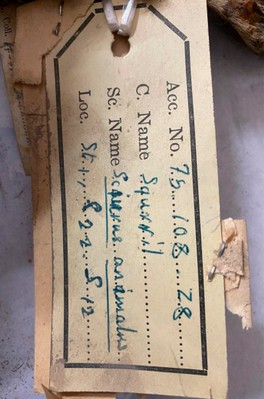
Figure 1. Shows the collection labels of the squirrel voucher specimens deposited in the Iraq Natural History Research Center and Museum (INHM).
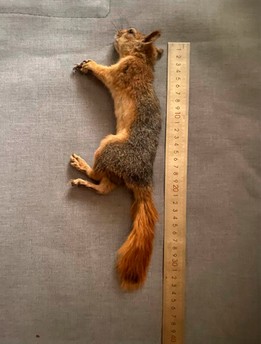
Figure 2. Show total body length from crown to end tail.

Figure 3. Show total trunk length from neck to start tail.
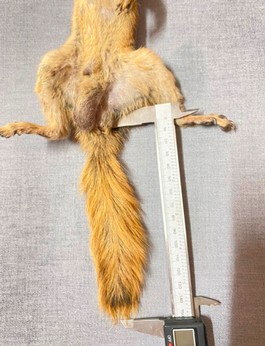
Figure 4. Show tail length from coccygeal reign to end tail.
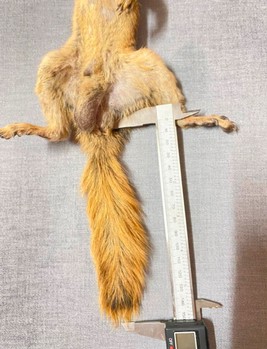
Figure 5. Hindlimb length from hip joint to end.

Figure 6. Forelimb length from shoulder joint to end.

Figure 7. Total head length & the almond eye.
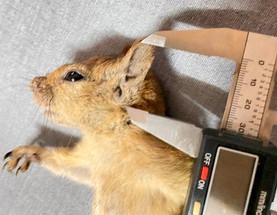
Figure 8. External ear (auricle) length.
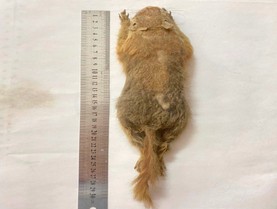
Figure 9. Total length of the mummified squirrel.
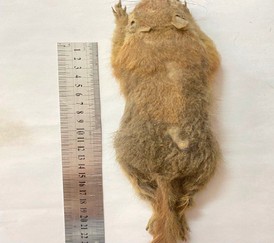
Figure 10. Trunk length of a mummified squirrel.
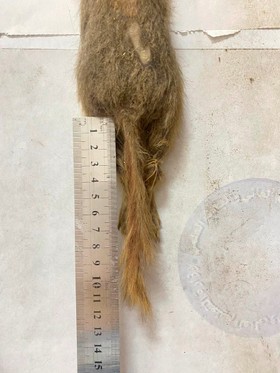
Figure 11. Total tail length of a mummified squirrel.

Figure 12. Hindlimb length of a mummified squirrel.

Figure 13. Forelimbs length of a mummified squirrel.

Figure 14. Head length of a mummified squirrel.

Figure 15. External ear (auricle) length of a mummified squirrel.
DISCUSSION
According to the survey study of geographical distribution carried out by 15,17, the family: Sciuridae, the Caucasian squirrel, Sciurus anomalous. Is found in 34 locations in northern Iraq, and is abundant in the mountainous areas of Mount Horman , Safeen mountainous and the areas near Ghali Ali Beg, Soran, Mar Matti, and Sinjar in Mosul. It is also found in northeastern Iraq, such as in the Penguin Dam areas Darbandikh and Koshak explained that seasonal variation might affect its color.
The current study revealed the vouchers specimens deposited with the Iraq Natural History Museum(INHM), it is clear that there are minor differences in length and measurements; that is, there are no sympatric congeners for Sciurusanomalus, and this is identical to what was stated 18S. anomalus was distinguished in the whole study by its golden-sunny color and gray dorsum 20,21,22. Observed 20,23 The tail is yellowish-brown with thick fur, consistent with current studies and voucher specimens deposited in the Iraq Natural History Research Center and Museum (INHM). Comparative measures for previous combined studies were 24,25,26. Total length, 322-358 compared to the current research the entire length (320-342); tail length, 130-180 while tailing length (157-152); and the length of the ear, 23-31 compared to the size of the ear (30-19). adult body masses. Its weight varies between 250 and 410 g compared to the group of the body of the studied squirrel (250 and 350). According to research, the dorsum size of 4 samples from Iraq was 13 mm, and the maximum length of the vibrations was 38 mm 12 while the measurement of the oscillations was (35-33 mm). The eye-ring was yellow or pale orange combined with the study 27,22. Seven samples 28of Sciurus anomalus were studied. It was found that the forelimb was about (47.1 ± 0.55) and the hind limb (was 69.5 ± 0.77), compared to the samples recorded in the Natural History Research Center and Museum(INHM). The forelimb (29.0 ± 0.25) and the hindlimb (47.5± 0.56) were anterior. The current samples for the study (were 32.5 ± 0.47). The front end was 32 mm, and the hindlimb was (35.0 ± 0.45), with the claws noted as dark brown, medium in length, approximately 0.55 mm, and 0.34 mm wide. 24,29. Research continued, and the authors unanimously agreed that seasonal variations that affect crust color do not significantly vary between summer and winter. Yet, it may occupy a rusty hue in winter. 30,31,32,33.observed in winter, the hair color is dark gray, the chestnut body-colored, and the head is black. Some researches study have found terminal tufts were growing in the inner part of the ear 24, and hind feet are covered with hair5.
CONCLUSION
This species was previously recorded by several authors and was deposited in the collection of the Natural History Museum (INHM). It was compared with the current species, and it was confirmed that these studied species are still found throughout Iraq, the study determined the absence of any relatively significant differences between the species preserved in INHM and the current ones, and therefore the genus must be maintained from risk exposure.
REFERENCE
1- Harrison, D. L. The mammals of Arabia 3, Lagomorpha and Rodentia. Ernest Benn Limited, London, United Kingdom, 1972.
2- Chaval, Y., Dobigny, G., Michaux, J., Pagès, M., Corbisier, C., Cosson, J.F., Herbreteau, V., (). A multi-approach survey as the most reliable tool to accurately assess biodiversity: the example of Thai murine rodents. Kasetsart Journal, Natural Sciences ,2010; 44(4):590-603.
3- Wilson, E. 0. The Diversity ofLife. Belknap Press of Harvard University Press, Cambridge, 1992.
4- Ostfeld R, Keesing. Biodiversity and disease risk: the case of Lyme disease. ConservBiol , 2000; 14(3):722-728.
5-Hecht-Markou, P. Das markieren des lebensraumes von Sciurus anomalus auf der Insel Lesbos. Annales Musei Goulandris , 1999 ; 10 :201–221.
6- Dahl, S. K. (). Animal world of the Armenian Soviet Socialist Republic, 1954.
7- Pavlinov, I. Y., and O. L. Ross olimo. The systematics of the mammals of the USSR. University of Moscow Press, Moscow, United Soviet Socialist Republic,1987.
8- Harrison, D. L., and P. J. J. Bates. The Mammals of Arabia. 2nd ed. Ernest Benn Limited, London, United Kingdom,1991.
9- Rahemo, Zohair IF; MOHAMMED, Sarbaz I. Vertebrate Specimens Deposited at Kurdistan Natural History Museum. Jordan Journal of Natural History, 2020; 7: 30-36.
10- Vermaat, J. E., Hellmann, F. A., van Teeffelen, A. J., van Minnen, J., Alkemade, R., Billeter, R., ... & WallisDeVries, M. F. Differentiating the effects of climate and land use change on European biodiversity: A scenario analysis. Ambio, 2017; 46(3): 277-290.
11- Yiğit, N., E. lolak, M. Sِzen, and A. Karataş. Rodents of Türkiye“Türkiyekemiricileri” (A. Demirsoy, ed.). Meteksan, Ankara, Turkey ,2006.
12- Mass eti, M. Natural and anthropochorous squirrels and dormice of the Mediterranean region. Hystrix, 2005; 16 (1) :3–26.
13- Mass eti, M. Homeless mammals of the Iolian and Aegean islands. Bonn Zoological Bulletin, 2010; 57 : 367–373.
14- Nikbakht, Reza, et al. Investigating the frequency of wild rodent nests in Aran va Bidgol desert in Isfahan province in central Iran. Journal of Entomological Research, 2021; 45(2): 367-372.
15- Raza, H. A., Fadhel, O., Ararat, K., Haba, M. K., Salim, M., Bachmann, A., & Chappell, B. Animal and bird trade and hunting in Iraq. Nature Iraq, Sulaimani, Iraq/Ministry of Environment, Baghdad, 2011.
16- Al-Zubaidi, A. A., Jane, S. K., & Hadi, A. M. (). Geological diversity and its importance on biodiversity SW Safeen Mountain-Erbil, Kurdistan, North Iraq. Advances in Bioresearch, 2014; 5(2), 53-60
17- Al Sheikhly, O. F., Haba, M. K., Barbanera, F., Csorba, G., & Harrison, D. L. Checklist of the mammals of Iraq (Chordata: Mammalia), 2015: 33-58.
18- Yiğit, N., B. Kryštufek, M. Szen, A. Bukhnikashvili, and G. Shenbrot. Sciurus anomalus. International Union for Conservation of Nature and Natural Resources Red List of Threatened Species,2008 .
19- Khalili, Farzaneh; Malekian, Mansoureh; Sadeghi, Maedeh. Habitat suitability modelling of Persian squirrel (Sciurus anomalus) in Zagros forests, western Iran. JWildlBiodivers, 2018; 2(2): 56-64.
20- Lurz, P. W. W., J. Gurnell, and L. Magris. Sciurus vulgaris. Mammalian Species 2005; 769 :1–10.
21- Ellerman, J. R. Key to the rodents of south-west Asia in the British museum collection. Proceedings of the Zoological Society of London, 1948; 118 (3):765–816.
22- Gavish, L. Preliminary observations on the behavior and ecology of free-living populations of the subspecies Sciurus anomalussyriacus(golden squirrel) on Mount Hermon, Israel. Israel Journal of Zoology, 1993;39(3):275–280.
23- Hecht-Markou, P., and C. Zafiratos. Comparative anatomic and biometric research on the bones of femur, scapula, humerus and pelvis of Sciurus anomalusGuldenstadt 1785 and Sciurus vulgaris L. 1758. Biologia Gallo-Hellenica ,1990; 17 :131–158.
24- Hecht-Markou, P. Besehreibung, geographischeverbreitung, biotope und ortswechsel des Sciurus anomalusGueldenstadt, 1785 auf der Insel Lesbos (Griechentand). Annales Musei Goulandris , 1994 ; 9: 429–443.
25- Albayrak, İ., and A. Arslan. Contribution to the taxonomical and biological characteristics of Sciurus anomalusin Turkey (Mammalia: Rodentia). Turkish Journal of Zoology, 2006; 30 (1):111–116.
26- von Lehmann, E. TaxonomischeBemerkungenzur Sنugerausbeute der KumerloeveschenOrientreisen 1953–1965. ZoologischeBeitrge, 1966; 12: 251–317.
27- Polyakova, R. S. The taxonomic position of common and Caucasian squirrels. ZoologicheskyZhurnal ,1962; 41:1247–1254.
28- Arslan, A., I. Albayrak, and T. Oshida. Banded karyotypes of the Persian squirrel Sciurus anomalusfrom Turkey. Caryologia , 2008; 61 (2):139–143.
29- Vinogradov, B. S., and A. I. Argiropulo. Fauna of the USSR:mammals(key to the rodents). Academy of Sciences of the United SovietSocialist Republic, Institute of Zoology, Moscow, United Soviet Socialist Republic ,1941.
30- Koprowski, John L., Leah Gavish, and Sandra L. Doumas. "Sciurus anomalus (Rodentia: Sciuridae)." Mammalian species , 2016 ;48 (934): 48-58.
31- Osborn, D. J. The hare, porcupine, beaver, squirrels, jerboas, and dormice of Turkey. Mammalia ,1964; 28:573–592.
32- Kolosov, A. M., N. P. Lavrov, and S. P. Naumov. Biology of the game animals of the USSR. VysshayaShkola, Moscow, United Soviet Socialist Republic,1965.
33- Afrasiab, Saman R., et al. "Fauna and flora of Hawraman mountain (part one) Hawraman lowest zone, Kurdistan province north east of Iraq." Bulletin of the Iraq Natural History Museum (P-ISSN: 1017-8678, E-ISSN: 2311-9799) ,2013;12 (4): 7-34.
Received: September 22, 2022 / Accepted: October 18, 2022 / Published:15 November 2022
Citation: Yousif N H. Comparative morph-anatomical study for the same rodents species in Iraq. Revis Bionatura 2022;7(4) 72. http://dx.doi.org/10.21931/RB/2022.07.04.72.